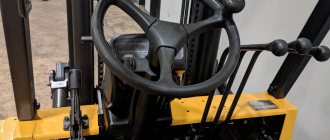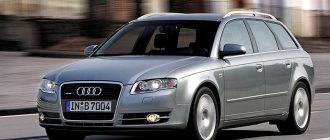Towing of vehicles is a very common maintenance measure. Any motorist may encounter the need for this operation as a result of an unexpected breakdown of one or another mechanism. Then all that remains is to organize the process of delivering the problematic equipment to the nearest service center or directly to the garage. At the same time, there are different means of towing vehicles, which it would be useful to have an idea about even before the critical moment.
Basic towing rules
In accordance with the instructions of the traffic rules, towing, regardless of the method of its implementation, can only be carried out if the driver is present at the wheel of a faulty technical device. The rules also limit the presence of people in the car as passengers. Obviously, the driver must be behind the wheel of the towing vehicle. But, as noted in the traffic rules, vehicles can only be towed by persons with at least two years of driving experience. This is the case when the rules impose restrictions on the right to drive based on experience.
In addition, already during the movement when using a flexible coupling, the distance between two cars should be at least 4 m, but not more than 6 m. In the case of organizing transportation with a rigid coupling, the distance can be at least 4 m - this point is also noted in Traffic rules Towing of vehicles using a flexible device must be carried out with appropriate markings. Now it’s worth taking a closer look at the two main types of towing – flexible and rigid.
Towing a car: how to do it right, we understand the nuances
- Towing a vehicle with any type of hitch should be carried out only if there is a driver in the towed vehicle . The only exception is the case when the structure allows the faulty vehicle to move clearly along the trajectory of the towing vehicle, but the flexible cable is not such.
- It is prohibited to carry passengers in towed vehicles.
- A driver with at least two years of experience must drive a vehicle that is towing .
- The distance between cars should be between 4 and 6 meters .
- The towed vehicle must have hazard warning lights on , and if it is not present, then a warning triangle must be attached to the rear of the vehicle.
- try to drive the towing vehicle smoothly, without additional jerks;
- try to keep the cable taut;
- do not make the cable length too short, as this will limit the driver’s visibility of the towed vehicle.
- The cable should be hooked on the left side of the towing vehicle, and on the right side of the towed vehicle.
Hard towing
Cylindrical metal reinforcement is usually used as a means of adhesion. It can also be a design based on two rods that are connected by a triangle - this configuration provides higher reliability and stability of control. But this option does not apply to passenger cars, since their design does not allow the use of such a massive and heavy bundle.
As for the movement process itself, the towing speed of vehicles should be no more than 50 km/h. Moreover, this parameter does not depend on the terrain, although it is obvious that in difficult off-road conditions the mode can be much more modest. The advantages of this method include the possibility of transportation even in icy conditions, but there are also limitations. For example, cars with a faulty steering mechanism are not allowed for such towing.
Towing a car - rules and types of towing
Towing a car , in layman's terms, is the transportation of one vehicle (practically a “passenger”) to another. The need for towing occurs when there is a sudden failure or breakdown of the vehicle's control systems. For example, as a result of an accident, when the car receives serious external and internal damage.
General rules for towing vehicles
— Transportation by tow requires the towing vehicle to have auxiliary technical means and equipment , as well as a sufficiently highly qualified driver.
-The towing vehicle must have low beams , and the towed vehicle must have an hazard warning light (if it is faulty, an “Emergency Stop” sign must be attached).
— The transportation of passengers in the cabin of the towed and towing vehicles is prohibited due to a decrease in their operational reliability.
motorcycles as towing vehicles .
— The towing speed should not exceed 50 km/h (for vehicles with a manual transmission) and 30 km/h (for vehicles with an automatic transmission).
— For cars with automatic transmission there are also restrictions on the length of the towing distance of up to 30-80 km. , if the wheels of the towed vehicle are “driving” on the road. In this case, the gear shift lever must be set to the “N” (neutral) position. This limitation is caused by the design features of the automatic transmission to avoid overheating of the transmission oil.
Transporting a car by tow can be done in several ways. Let's take a towing methods .
Towing with a rigid hitch
In this case, the role of the connecting element is a special cylindrical metal rod, or a towing structure consisting of two rods connected at an angle (“triangle”).
This type of towing is not suitable for moving passenger cars, because their design does not provide places for attaching a rather heavy rigid rod.
Rules for towing with a rigid hitch:
— The length of the towing rod should not exceed 4 meters .
— The driver of the towed vehicle must be behind the wheel in order to adhere to the trajectory, however, with a triangle hitch this is not necessary (although it is desirable).
— Towing vehicles with faulty steering on a rigid hitch is prohibited .
— Towing with a rigid hitch is permissible in icy conditions when driving on a slippery road.
Towing with a flexible hitch
In order to tow with a flexible hitch, you should use a nylon or steel cable as a connecting link. By the way, a nylon halyard is in no way inferior to a steel one (for example, in strength). Under load, the nylon halyard begins to stretch. Thanks to this, the likelihood of damaging body parts is reduced, and breaking or deformation of the towing eyes becomes almost impossible.
But the nylon cable also has a drawback: if it sag too much, it will most likely rub off on the asphalt. True, now this “minus” has been eliminated, thanks to the creation of a special protective sheath for the nylon cable. The shell itself is also quite flexible. The use of this design does not allow the nylon halyard to sag (even in cases where a minimum distance of 1.5-2 meters is formed between cars).
Rules for towing with a flexible hitch:
— The length of the cable for a flexible coupling should not exceed 4-6 meters .
— The tow rope should not sag or touch the road .
— In order to visually indicate the cable, you should use 2 flags (at least), the size of which is 215 by 200 mm, they should be painted with white and red stripes diagonally 50 mm wide.
— The driver of the towed vehicle must be behind the wheel in order to adhere to the trajectory and a certain distance.
— Towing with a flexible hitch is prohibited if the steering and/or braking system of the towed vehicle is impaired.
— Towing on a flexible hitch is prohibited in icy conditions.
Towing by partially or fully loading the vehicle
A tow truck is used as an auxiliary vehicle, equipped with a special loading platform and equipment to lift and securely secure the transported vehicle.
This type of towing is precisely used when cars are driving in icy conditions, with faulty steering and a failed brake system. That is, in all cases where towing with a flexible or rigid hitch is prohibited.
For cars with automatic transmission, due to the above-mentioned design features, towing is usually used by fully loading it onto a tow truck.
As a result of an accident, a car often requires serious body repairs. You can learn more about professional body repair on the website www.avtort.ru.
Read with this article:
Multifunctionality of a car navigator
Drive axles of MAZ trucks - maintenance, causes and troubleshooting methods
Automatic recorder - what is it and how does it work?
LED strip - a fashionable feature in car lighting
Towing with a flexible hitch
A cable is used to provide flexible traction. It can be made of nylon, composite fibers or metal threads. It is advisable to select the material in accordance with the weight and dimensions of the towed equipment, but at the same time take into account that a steel cable with the slightest damage can lead to serious damage in the event of a break. Nylon cables also have disadvantages - they can stretch when moving, and their fibers quickly wear out.
According to the rules, towing a disabled vehicle using a flexible link should not allow it to sag. The measure is not always feasible, but it is quite possible to avoid touching the road surface. As noted, visual identification is required when using this method of transportation. To do this, use two flags with parameters 215 x 200 mm with white and red stripes. As for the limitations of the use of flexible traction from the point of view of the nature of the equipment malfunction, towing is unacceptable in case of violations in the braking system.
Towing prohibited/allowed
Let's start with when PPD is prohibited from towing a vehicle:
- When there is ice . In such conditions, driving a working vehicle is quite difficult, and maintaining the stability of a faulty one is even more difficult.
- If the brake system and steering of the vehicle that needs to be towed are faulty . With the steering not working, the car will fly into a ditch at the first turn, and in the absence of brakes, at least two damaged cars will appear on the road. The first one is the one that was in front, the second one is behind.
- It is forbidden to tow a motorcycle without a sidecar using a flexible hitch , since it has virtually no stability on the road.
- It is prohibited to tow two or more vehicles at the same time..
The fine for violating the rules of towing a car in 2021 will be 500 rubles . This, of course, is not much, but the collision of the “driven” and “leading” vehicles does not cause positive emotions.
What does it take to help a motorist in trouble?
In addition to the transport itself, there is also the corresponding state of the flexible coupling. It must be intact, free from damage and scuffs, the loops and carabiners for fastening must be in good working order.
The length of the cable is no less than 4 and no more than 5 meters. If it is shorter, then the chance of the second car driving into the front one tends to be one hundred percent, and if it is longer, then the car driving behind will deviate greatly from the trajectory of movement.
The halyards must have warning signs or flags . These are devices with diagonally drawn reflective white and red stripes. If you don’t have them, you can use pieces of red fabric.
Modern steel cables are made of colored threads: white, blue, red and others, some of which are coated with a reflective compound. That is, modern halyards themselves are warning devices.
The last thing to check are the towing hooks and eyelets.
According to changes to the traffic regulations dated April 4, 2017, the driver of a towing vehicle must have at least two years of driving experience.
Towing facilities
Typically, the process involves two components - a kind of source of traction and a means of providing it. The first can be a car, truck, tractor or other lifting equipment capable of handling increased loads. The choice of a specific product depends on the characteristics of the faulty equipment in terms of weight, as well as its dimensions. The second component has already been described in the form of metal rigid beams and flexible cables.
But other means of towing vehicles may be used to provide auxiliary functions. Depending on the towing conditions, V-slings for loading, jacks, grips, additional braking systems, lights to illuminate the road in case of malfunction of standard optics, etc. can be used.
Features of towing heavy special equipment
The means described above are basically useless when it comes to transporting large, powerful vehicles with large tonnage. In this case, heavy-duty trailers, wheeled or tracked tractors, and sometimes tractor equipment will be connected.
In terms of auxiliary devices, hydraulic lifts and hydraulic jacks can be noted. The fact is that the means of towing vehicles in the case of heavy vehicles are largely oriented towards lifting operations, therefore the corresponding power mechanisms are used.
What is a rigid and flexible hitch?
There are hundreds of situations that may require the use of a tow or tow truck. In these situations, it is necessary to use common sense and make the right decision, because the consequences of a mistake can be surprisingly unpleasant. A rigid hitch is used in cases where the driver of the leading vehicle has the necessary skills and the vehicle is technically ready for such a challenge. It is very important to follow certain rules prescribed in government documents so as not to pay a fine and not offset all the benefits of saving on tow truck services.
I converted the 2104 can into a technical vehicle, welded a roller with a rotating platform, I roll the cans for competitions, sometimes I cradle the evacuation, when I’m carrying an empty roller, I throw a set of wheels onto it from the roof rack so that the empty one doesn’t jump. There are team stickers on the car, marked “TECHNICAL”, and have never been stopped. Category B, C.
Features of towing cars with automatic transmission
In preparation for moving models with automatic transmission, you should carefully check the condition of the mechanisms, as well as the oil level. Then, when you turn the ignition key, the steering stem is released from the lock, and the handle is placed in the neutral position. After this, towing of motor vehicles with automatic transmission is carried out with short stops to cool the transmission. It is recommended to travel no more than 50 km at a time.
In any case, even if you follow the rules for transporting cars with automatic transmissions, the transmission will be damaged. Therefore, if possible, it is advisable to carry out partial or full loading using a tow truck. For example, towing motor vehicles with all-wheel drive and automatic transmission is not practiced at all. If the choice fell on this method, then the best option for moving would be to organize rigid traction.
Full or partial loading
This method of transportation can only partially be put on a par with traditional towing, but, as already noted, it is often used as an alternative. Typically, “problem” equipment (heavy loads, large vehicles, etc.) is moved in this way, the difficulty of towing which is determined by the requirement of large power resources. In this case, such means of towing vehicles as a tow truck, a loading platform and lifting equipment are used.
After loading the machine onto the platform, special fixing means are also used. As for the differences in full and partial loading, in the first case the equipment is completely located on the platform and secured there, and in the second case, the rear wheels can move on the road surface, that is, only the front part is fixed.
In what cases is towing prohibited?
It is impossible to use more than one serviced vehicle in one towing package. This configuration makes handling more difficult, not to mention increasing the traction load. In some cases, depending on conditions, there may be restrictions on towing in bad weather or in the presence of certain faults.
Failures in the brake system and steering column, as already mentioned, force one to turn to an alternative method of towing, or even load on a platform. Also, towing vehicles is prohibited if we are talking about motorcycles without a trailer.
Existing prohibitions and restrictions
A ban on towing by all methods may be imposed as a result of exposure to weather conditions or the specific nature of the vehicle breakdown. Cases when such transportation is prohibited:
- If there is a malfunction in the steering system, the use of a cable is prohibited. In this case, only the partial loading method is allowed.
- It is prohibited to transport cars with an automatic transmission in winter using a cable. Rigid coupling or, preferably, partial loading is permitted.
- One tug can only transport one vehicle. Weight and dimensions do not matter.
- If there is a breakdown in the brake system, only one transportation option is possible - a forklift or partial loading.
- Motorcycles without a side trailer can only be transported by tow truck. All types of coupling are not available in this case.
- In adverse weather conditions, the flexible hitch is not used. These conditions include icy conditions, heavy rain or fog.










